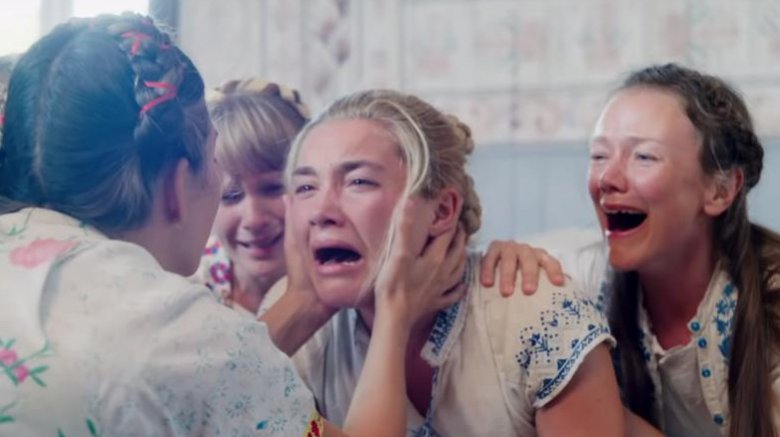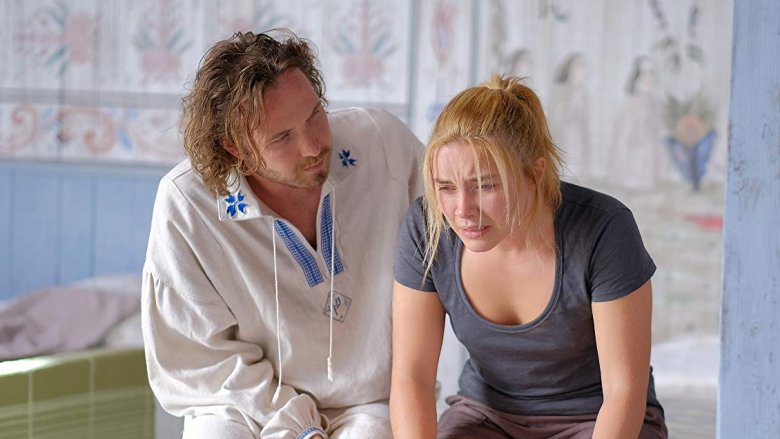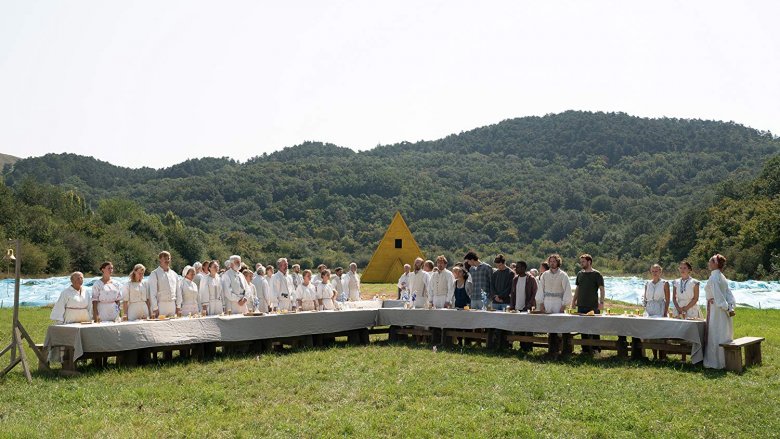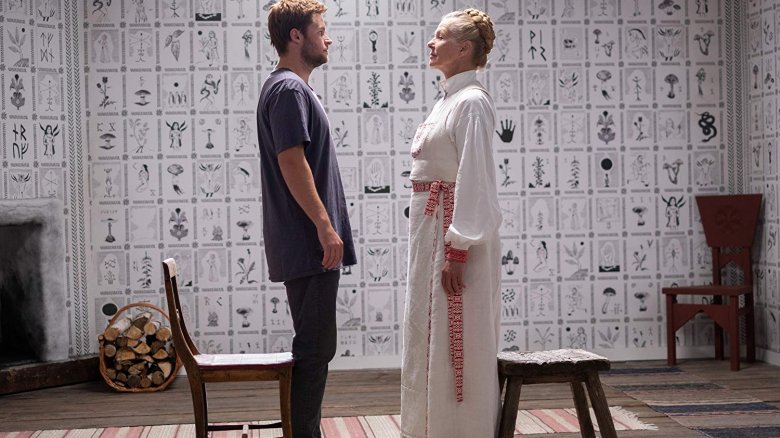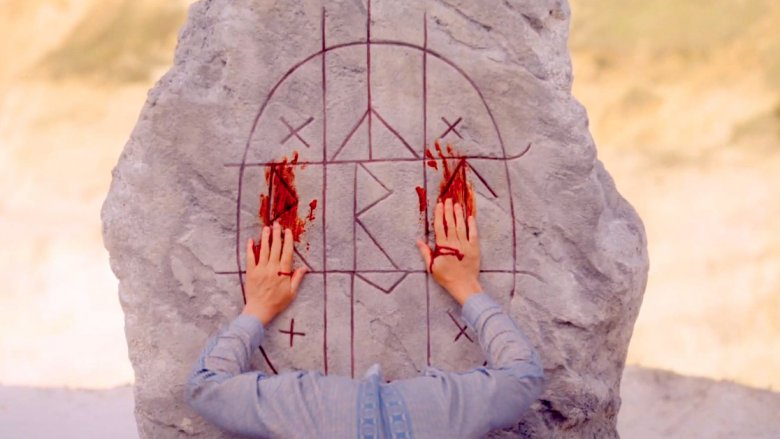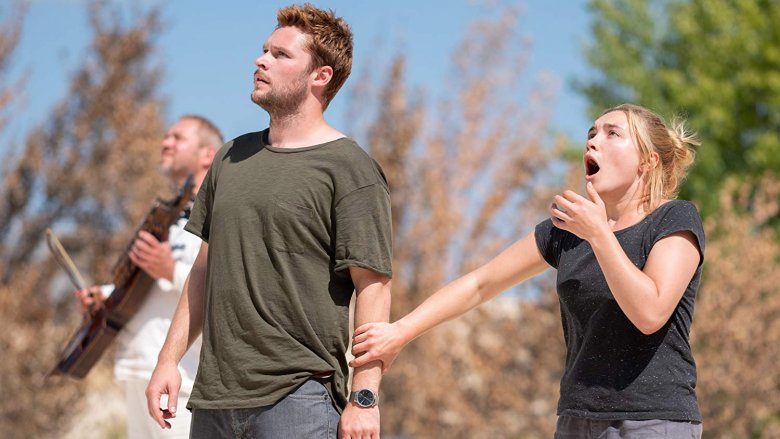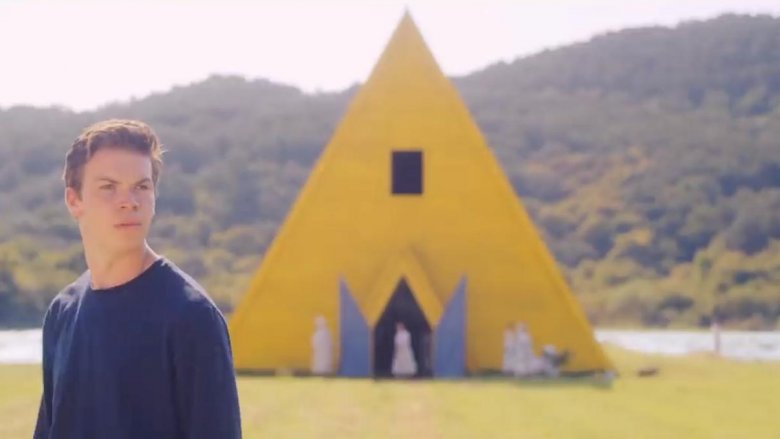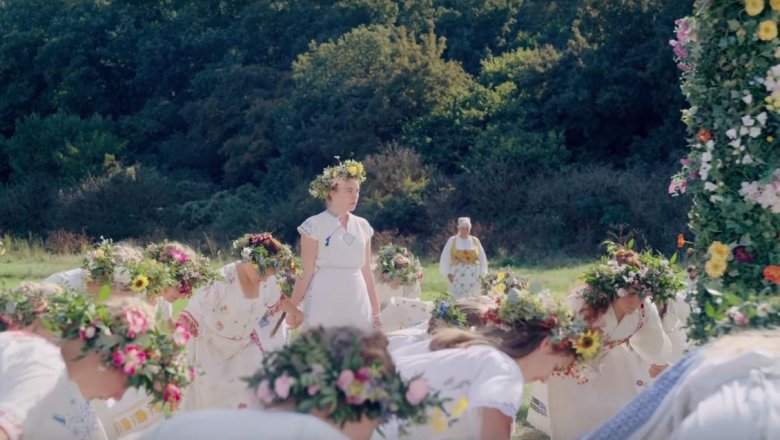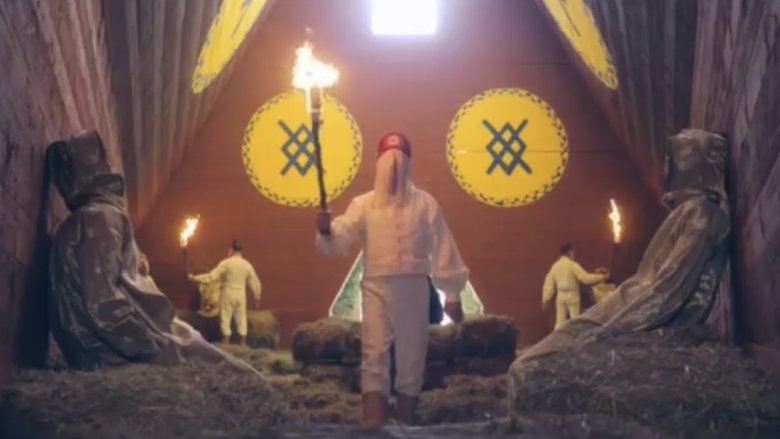Here's Why Midsommar Is The Scariest Movie Of 2019
Midsommar, Ari Aster's much-anticipated follow-up to 2018's Hereditary, is finally here, so horror fans everywhere can finally put on their best white dresses and flower crowns to dig into this sun-drenched piece of folk-horror.
Like his last film, Midsommar gives us Aster at the peak of his powers once again, combining an ensemble cast, impeccable production design, and a judicious use of horror elements to deliver a genre movie wrapped around a white-hot core of universal human pain and trauma. The result is a movie that might be predictable for longtime genre junkies, but nevertheless delivers well-crafted scares and enough unsettling moments to give you nightmares for days.
So, now that the movie is out, let's take some time to talk about why it just might end up being the scariest movie of 2019, from a phenomenal lead performance by Florence Pugh to its use of sunlight to deliver scares to that nerve-rattling finale.
SPOILERS AHEAD for all of Midsommar!
Florence Pugh is a powerhouse
Midsommar is, like Hereditary before it, a film in which the horror exists as an external manifestation of and colorful metaphor for the internal trauma of a person's life. In this film, that person is Dani, a college student who loses her entire family to murder-suicide in the film's opening minutes. She then has to deal with a boyfriend (Jack Reynor) who doesn't want to be with her anymore, but who stays out of a sense of half-hearted obligation to help her process her grief.
In that sense, Midsommar is a breakup movie, with Dani doing all of the emotional heavy lifting. That means the character required a first-rate performance, and in Florence Pugh the film found an absolute powerhouse. She is able to deftly and bravely navigate the emotional gauntlet that Dani has to go through — from her tragedy at the film's beginning to her ecstatic revelation at its end — with grace, power, and sensitivity. But it's not just her ability to cry and scream effectively that makes her a star in this film. Pugh also finds real resonance and psychological detail in the film's quieter moments, particularly in the way she makes the choice to end Christian's life in the final ritual. The film doesn't work without her, and because of her, it soars.
Midsommar's midnight sun
Midsommar has been heavily marketed as a horror film that will manage to scare you despite taking place almost entirely in broad daylight. While that might be something of an exaggeration, it is true that the film's biggest moments work as images of genuine horror despite being delivered in the stark light of Sweden's midnight sun.
Midsommar isn't the first film to do this, of course, as any fan of films like The Wicker Man or Day of the Dead (which takes place mostly under fluorescent light, but still) can attest. It's not some kind of revolutionary breakthrough for horror, but as with many things in this film, it's executed flawlessly. It begins with Aster turning the midnight sun against his American main characters, creating the sense that they are now visitors in an alien world. As the film progresses — even with flashes of night that appear in things like Dani's dreams and memories — the daylight becomes such a threatening specter that you find yourself almost praying for a little more darkness. At least the darkness might cover up some of the gruesome events you're forced to see in complete detail.
A relateable relationship drama
We've already talked about Florence Pugh's phenomenal performance as a woman pushed to her emotional brink by the dual issues of grief and the emotional distance of her boyfriend, but she's just one part of a two-handed story when it comes to Midsommar's often cringe-inducing (in a good way) breakup narrative. As Christian, Jack Reynor convincingly and infuriatingly plays a jerk you're all too familiar with if you've ever had or known a bad boyfriend who, while not necessarily being abusive, was nonetheless constantly distant and defensive as he branded himself the good guy just for sticking around. Reynor digs deep into Christian's shrug-heavy "Who, me?" persona, and while you don't exactly end up liking him, it has the desired effect.
Together, Pugh and Reynor carve a narrative of a relationship that's not exactly full of fights and hatred, but is nonetheless propelled forward only by the sense that it's supposed to keep going because it already has for so long. These are two people at the end of their shared rope, and Midsommar plays that with such delicacy that anyone who's ever felt the same about their own relationships will be unnerved.
The look of Midsommar
Midsommar is a film that largely had to be built from the ground up. The village had to be assembled piece by piece, from the murals along the walls of the common sleeping area to the inner sanctums of the elders to that ominous yellow triangle where it all comes to an end.
The village is an outgrowth of the film's mission to be a horrific movie experience while also taking place almost entirely in daylight. It has to stand proud and bright throughout the film, never seeming to hide anything but in fact hiding many dark secrets. It has to look like a place of celebration — because for the people who live there, it is — while also always carrying something deeply ominous. It has to look like a festival destination even as it becomes a prison.
To that end, production designer Henrik Svensson, Supervising Art Director Nille Svensson, and their teams poured all of their talents into making the village as detailed and as unnerving as possible, and their hard work brings the whole film together.
An unflinching camera
The daylight of Midsommar carries with it an ominous mission statement for the film. You can close or cover your eyes. You can even leave the theater, but this film is not going to cloak itself in darkness. None of its moments of emotional and physical darkness will be matched with aesthetic darkness. This is a bright film that will not look away.
Aster's camerawork in the film reinforces this mission statement. While he certainly doesn't show us everything, the visual style of the film — particularly when it moves into long, lovingly crafted overhead shots — suggests a filmmaker who wants to be an omniscient eye in this world he's created. That then extends into the film's most graphically violent sequences, and moments in which another filmmaker might cut away are instead pushed in on, more and more, until we almost flinch. Then, when the camera lingers in an otherwise quiet moment, we begin to expect violence that never comes. It's a great way to throw an audience off balance.
Gorgeously effective gore
In Hereditary, Ari Aster gave us everything from a little girl's head flying off to a decapitated corpse floating up into a tree house. The man is not afraid to pile on the gore, and that continues in Midsommar, a film that brings that gore into the harsh light of day as often as possible.
Simply saying Aster is a director who enjoys putting gruesome moments in his films isn't saying much. After all, a lot of horror directors have accumulated fame thanks to their relentless use of bucket after bucket of blood. What makes Aster's particularly gore style effective is how judicious he really is with it. The film could have used the death of Dani's family to present a bloody moment, but no. That murder-suicide is quieter and less messy. The real violence of the film doesn't land until the first major ritual, when two elders jump off a cliff as part of a suicide pact. Then it all lands with gut-churning ferocity, as heads bounce off rocks and mallets finish off already broken bodies. Aster knows exactly how long to wait before dropping this on us, and his timing is what makes the gore work so well.
Ari Aster's comic relief
As relentless as Midsommar is in its assault on your senses, and as good as the film is at executing its horrific sequences, Aster knows from the beginning that there needs to be some way to release the tension. The film has to have to cool-down moments and flashes of levity, or the ramp up to the real horror doesn't quite land as well. This is where the often unexpected and very welcome sense of humor of Midsommar comes in.
This humor often lives largely in the character of Mark (Will Poulter), the least respectful and most vocal of Pelle's friends, who's more than happy to chase women around the village while puffing on his vape pen and unknowingly taking a leak all over the ashes of their ancestors. Thanks to him (and a few other moments of levity), the film adds the horror of American tourists as an invasive species into its narrative, and we all recognize the symptoms while we laugh about them.
A climactic dance
Midsommar is a creeper, in more ways than one. It's a film that's not interested in delivering a scare-a-minute thrill ride. Instead it creates a sense of dread that runs through the whole piece like a taut wire, occasionally building to moments where you feel the wire might snap.
The May Queen dance competition near the end of the film, in which Dani is drugged and coerced into a ritual in which she must quite literally dance until she drops, is a master class in this kind of filmmaking. We keep expecting to see something awful happen as Dani weaves and hops through the crowd of intertwined women, the drugs she's on occasionally distorting their faces as she looks for some kind of reason to it all. Then, as the dance goes on, she is swept along in the ecstasy of the movement, and the constantly twirling tangle of women around the Maypole becomes a kind of transformative machine for Dani, helping her to begin to become something else. Through it all, there's a sense that at any moment the scene could explode into hideous, relentlessly graphic violence. It's a fantastic sequence, once that reinforces every unsettling thought you've had while watching the movie up to that point.
The final ritual
Midsommar does not break the mold established by other folk-horror classics that have come before it. We know the writing is on the wall for our American visitors well before they do, we just don't yet know how they'll come to meet their various ends. Even when it becomes clear that Pelle has selected Dani as a candidate for May Queen (which is foreshadowed very early in the film), we don't know if that means she's marked to die or marked to somehow survive and assimilate.
Then, as the film reaches its end, everything is laid out rather clearly. Dani survives and she uses her newfound adoration among the people of the village to make Christian their final sacrifice. The direction of the film's finale is clear, but Aster and company are nonetheless able to take the expected and make it unexpected through the sheer power of the moment. The bodies hollowed out like rag dolls, the yellow triangular building in flames, the bear corpse sewn up around Christian... it's all designed to make you nervous. Then the screaming starts, and those nerves are released in an ecstasy of primal energy that feels at once celebratory and horrifying.
